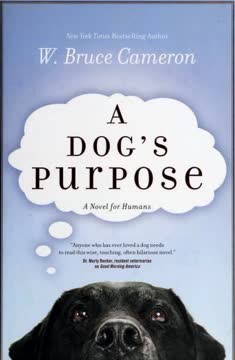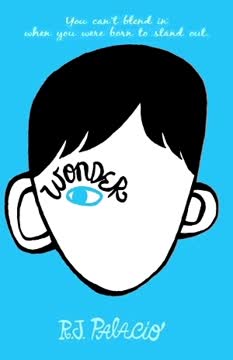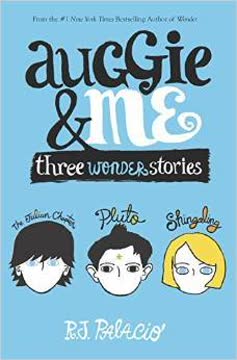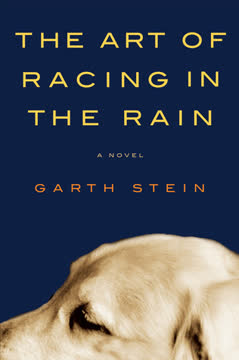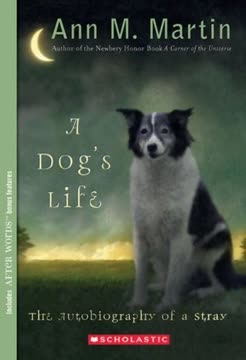Plot Summary
Born to Wander
A nameless puppy is born into a world of struggle, learning to navigate the dangers and joys of life with his mother and siblings. Early on, he discovers the importance of family, the thrill of exploration, and the ever-present threat of humans. His mother teaches him to fear people, but curiosity lingers. When humans finally intervene, the puppy's world is upended, and he is thrust into a new environment, setting the stage for a life defined by change, adaptation, and the search for belonging.
The Yard's Lessons
Rescued from the wild, the puppy—now named Toby—finds himself in a yard full of dogs, learning the rules of pack order, submission, and play. He bonds with other dogs, especially Coco, and observes the complex social dynamics among canines and humans. The yard is both a haven and a place of loss, as dogs come and go, and Toby learns about love, rivalry, and the pain of separation. The lessons of the yard shape his understanding of loyalty and the need for purpose.
Lost and Found
Toby's world is shattered when animal control raids the yard, leading to separation from his family and eventual euthanasia. But death is not the end—he is reborn as a new puppy, this time a golden retriever. With each new life, he retains memories and instincts from before, carrying forward the lessons of survival, love, and the desire to serve. This cycle of death and rebirth becomes central to his journey, as he seeks to understand why he keeps coming back.
New Lives, New Names
As a golden retriever, the dog is rescued from a hot car and adopted by a loving family, receiving the name Bailey. He forms a deep bond with a boy named Ethan, experiencing the joys of puppyhood, play, and unconditional love. Each new name and life brings fresh challenges and opportunities, but the question of purpose remains. Bailey's devotion to Ethan becomes the anchor of his existence, shaping his actions and giving meaning to his many lives.
The Boy and the Bond
Bailey and Ethan grow up together, sharing adventures, mischief, and the trials of childhood. Bailey becomes Ethan's confidant, protector, and best friend, witnessing the boy's joys and sorrows. Their bond is tested by family struggles, neighborhood dangers, and the challenges of growing up. Through it all, Bailey's unwavering loyalty and love for Ethan define his sense of self, reinforcing the idea that his purpose is to be there for his boy, no matter what.
Growing Up Together
As Ethan enters adolescence, life becomes more complicated. Friendships shift, family dynamics change, and new people enter their lives. Bailey observes Ethan's first love, heartbreak, and the pressures of school and sports. The dog's role evolves from playful companion to steadfast supporter, always ready to comfort and protect. Through injuries, disappointments, and the passage of time, Bailey's presence remains a constant source of comfort and stability for Ethan.
Danger and Devotion
Bailey's devotion is put to the test when Ethan faces real danger—fires, accidents, and the malice of others. The dog's instincts and courage save Ethan's life more than once, reinforcing the deep connection between them. These moments of crisis reveal the true depth of their bond and the lengths to which Bailey will go to fulfill his purpose. The dog's actions are driven by love, loyalty, and an unshakeable sense of duty to his boy.
Cycles of Love
Inevitably, time brings loss. Bailey grows old and eventually dies, leaving Ethan behind. But death is not the end; the dog is reborn again, this time as a female German Shepherd named Ellie. Each new life brings new people, new challenges, and new forms of love. The cycle of reincarnation continues, with the dog always seeking to understand his purpose and to serve the humans who need him most.
Rescue and Purpose
As Ellie, the dog becomes a search-and-rescue canine, working alongside dedicated handlers to find and save people in danger. The work is demanding and sometimes dangerous, but it brings a new sense of fulfillment. Ellie learns the value of teamwork, discipline, and the satisfaction of making a difference. Through her efforts, she saves lives and brings comfort to those in need, deepening her understanding of what it means to have a purpose.
Loss and Return
After a career of service, Ellie's life ends, and she is reborn once more—this time as a black Labrador. This new life is marked by confusion, neglect, and abandonment, as she is passed from one indifferent owner to another. Despite hardship, the dog's memories and instincts guide her, and she never loses hope of finding her true purpose. Eventually, fate leads her back to a familiar place, where she senses the presence of someone she once loved.
The Search for Meaning
Drawn by scent and memory, the dog—now named Buddy—finds her way back to Ethan, now an old man living alone on the family farm. The reunion is bittersweet, as both have endured loss and change. Yet, in finding each other again, they rediscover the joy and comfort of their old bond. Buddy's presence brings new meaning to Ethan's life, and the dog realizes that his purpose has always been to love and care for his boy.
Working Dog, Working Heart
Throughout her many lives, the dog serves in different roles—companion, protector, rescuer, and friend. Each incarnation brings new challenges and opportunities to help others. Whether saving a child from drowning, comforting a grieving family, or working alongside police and rescue teams, the dog's actions are guided by love and a desire to serve. The fulfillment of these roles brings a sense of peace and completion, even as each life comes to an end.
Finding Family
As Buddy, the dog helps Ethan reconnect with old friends and family, bringing people together and healing old wounds. The presence of the dog inspires love, forgiveness, and new beginnings, not just for Ethan but for those around him. Through small acts of loyalty and kindness, Buddy becomes the glue that holds the family together, proving that a dog's purpose extends beyond a single person to encompass an entire community.
The Final Reunion
In his final days, Ethan recognizes Buddy as the same dog who loved him as a boy. The realization brings closure and peace to both man and dog, affirming the enduring nature of their bond. As Ethan passes away, Buddy remains by his side, fulfilling his purpose to the very end. The circle is complete, and the dog's journey comes to a gentle, satisfying close.
Completing the Circle
With Ethan's passing, Buddy reflects on the many lives he has lived and the lessons he has learned. Each incarnation, each act of love and service, has been a step toward understanding his true purpose. The dog's journey is one of growth, sacrifice, and unwavering devotion, culminating in the realization that his purpose was always to love, protect, and bring joy to those who needed him most.
Lessons of Loyalty
The story's ultimate message is one of loyalty, love, and the importance of being there for others. Through every hardship and joy, the dog remains steadfast, embodying the qualities that make dogs so beloved by humans. His journey teaches that purpose is found in service, in connection, and in the simple act of loving unconditionally. The dog's life is a testament to the power of loyalty and the enduring impact of a faithful heart.
The Last Goodbye
As Buddy's own life draws to a close, he finds peace in knowing he has fulfilled his purpose. Surrounded by love, he lets go with gratitude and contentment, leaving behind a legacy of devotion and kindness. The story ends with the assurance that love transcends life and death, and that the bonds we form—whether human or canine—are never truly broken.
Characters
Toby/Bailey/Ellie/Buddy
The central character is a dog who reincarnates through several lives, each time with a new name and body but retaining memories and instincts from before. As Toby, he learns survival and pack dynamics; as Bailey, he becomes a beloved companion to Ethan; as Ellie, he serves as a search-and-rescue dog; and as Buddy, he finds his way back to Ethan in old age. His journey is marked by loyalty, love, and a persistent quest to understand his purpose. Psychologically, he is driven by a need to belong and to serve, adapting to each new life with resilience and hope. His development is a testament to the enduring spirit of devotion and the transformative power of love.
Ethan
Ethan is the human anchor of the story, first encountered as a boy who rescues and raises Bailey. Their bond is deep and formative, shaping both their lives. Ethan faces challenges—family strife, injury, heartbreak, and the trials of growing up—but Bailey's presence provides comfort and stability. As Ethan ages, he experiences loss and loneliness, but the return of Buddy rekindles his sense of joy and connection. Ethan's journey mirrors the dog's, as both seek meaning, healing, and the reassurance of unconditional love.
Hannah
Hannah is Ethan's childhood friend and later love interest. Their relationship is marked by separation and reunion, echoing the themes of loss and rediscovery that run through the novel. Hannah's presence brings warmth and renewal to Ethan's life, and her eventual return helps complete the circle of family and belonging. She represents hope, forgiveness, and the possibility of new beginnings, both for Ethan and for Buddy.
Senora
Senora is the compassionate woman who rescues Toby and provides a safe haven in the yard. She embodies kindness, patience, and the selfless care that defines true animal lovers. Her influence shapes Toby's early understanding of humans and sets the stage for his later devotion to those who show him love.
Jakob
Jakob is Ellie's search-and-rescue handler, a man marked by loss and emotional distance. Through their partnership, Ellie learns discipline, courage, and the satisfaction of saving lives. Jakob's journey is one of healing, as his bond with Ellie helps him confront his grief and find new purpose. He represents the transformative power of working together toward a greater good.
Maya
Maya becomes Ellie's second handler, offering a different kind of love—one rooted in patience, encouragement, and mutual growth. Through Maya, Ellie experiences the joys of partnership, community, and the fulfillment of helping others. Maya's own struggles with self-doubt and perseverance mirror the dog's journey, highlighting the importance of resilience and support.
Todd
Todd is a troubled boy whose actions bring harm and chaos to Ethan's life. His psychological instability and capacity for cruelty serve as a counterpoint to the dog's loyalty and goodness. Todd's presence introduces real danger, testing the bonds of family and the dog's protective instincts.
Gloria
Gloria is a peripheral but significant character, representing the challenges of human imperfection. Her neglect and self-absorption put those around her at risk, highlighting the importance of vigilance, responsibility, and the need for a loving, attentive presence—qualities the dog embodies.
Carly
Carly is a fellow dog who becomes a friend and playmate to Buddy in his final life. Her exuberance and simplicity provide moments of joy and connection, reinforcing the theme of companionship and the value of living in the moment.
The Mother Dog
The protagonist's first mother imparts essential lessons of survival, caution, and the importance of family. Her influence echoes throughout the dog's many lives, shaping his instincts and his understanding of what it means to care for others.
Plot Devices
Reincarnation and Memory
The central narrative device is the dog's reincarnation, allowing him to experience multiple lives, owners, and purposes. With each rebirth, he retains memories and instincts from before, creating a sense of continuity and growth. This device enables the exploration of different human-dog relationships, the impact of environment and circumstance, and the search for meaning across lifetimes.
First-Person Canine Perspective
The story is told from the dog's point of view, offering a unique, often humorous, and deeply empathetic lens on human behavior, emotions, and society. This perspective allows for both innocence and wisdom, as the dog interprets events with a blend of instinct, loyalty, and curiosity. The narrative voice is engaging, accessible, and emotionally resonant.
Cyclical Structure and Foreshadowing
The novel's structure is cyclical, with each life building on the last and foreshadowing future events. Early experiences—such as learning to open a gate or the importance of rescue—become crucial in later lives. The repetition of themes, relationships, and challenges reinforces the idea that purpose is discovered through persistence, love, and the willingness to serve.
Symbolism of Purpose
The recurring question—"What is a dog's purpose?"—serves as both a literal and metaphorical thread. The dog's journey mirrors the human search for meaning, suggesting that fulfillment is found in connection, loyalty, and the simple act of being there for others. The story uses the dog's experiences to explore universal themes of love, loss, redemption, and the enduring power of devotion.
Analysis
A Dog's Purpose is a moving, multi-layered exploration of the human-animal bond, told with warmth, humor, and emotional depth. By following a single dog's soul through multiple lives, the novel examines what it means to love, to serve, and to find meaning in a world full of change and uncertainty. The dog's journey is both literal and symbolic, reflecting the universal quest for purpose that defines the human experience. Through the eyes of a loyal, loving canine, the story celebrates the transformative power of companionship, the resilience of the spirit, and the enduring impact of kindness. In a modern context, the book reminds us that our relationships—with animals and with each other—are what give life its deepest meaning, and that even the simplest acts of loyalty and love can change the world.
Last updated:
FAQ
Synopsis & Basic Details
What is A Dog's Purpose about?
- A Soul's Reincarnation Journey: The novel follows a single dog's soul through multiple reincarnations, each time born into a new body and life, but retaining memories and a growing understanding of the world and its purpose. From a wild puppy to a beloved family pet, a dedicated search-and-rescue dog, and an abandoned stray, the dog experiences diverse lives.
- Quest for Meaning: Across these lives, the dog grapples with the fundamental question: "What is a dog's purpose?" This quest drives his actions, leading him to learn about survival, loyalty, love, and the profound connection between humans and canines.
- Unconditional Love's Power: Ultimately, the story is a heartwarming exploration of the unbreakable bond between a dog and its human, particularly his enduring devotion to a boy named Ethan, whom he encounters in several lives, always striving to protect and bring happiness.
Why should I read A Dog's Purpose?
- Emotional Resonance & Heartfelt Story: Readers are drawn into a deeply emotional narrative that explores themes of love, loss, and the enduring spirit of companionship, often eliciting tears and profound reflection on their own pets. The dog's innocent perspective on human complexities offers both humor and poignant insights.
- Unique Perspective on Life & Death: The novel's central concept of canine reincarnation provides a fresh and thought-provoking lens through which to view life's cycles, the meaning of existence, and the idea that love transcends physical boundaries. It offers comfort and a unique understanding of a pet's devotion.
- Universal Themes of Purpose & Connection: Beyond the canine narrative, the book delves into universal human experiences—finding one's calling, coping with change, and the importance of connection—making it relatable to anyone seeking meaning and understanding in their own lives.
What is the background of A Dog's Purpose?
- Author's Personal Inspiration: W. Bruce Cameron was inspired by his own experiences with dogs and the profound impact they had on his life, particularly after the loss of a beloved pet. This personal connection imbues the narrative with authentic emotion and a deep understanding of the human-animal bond.
- Exploration of Canine Cognition: Cameron conducted research into how dogs think and perceive the world, drawing from works by Desmond Morris and Elizabeth Marshall Thomas, among others. This research informs the dog's first-person canine perspective, making his observations and interpretations feel genuinely canine.
- Midwestern American Setting: The story primarily unfolds in various settings across the American Midwest, from rural farms to suburban neighborhoods and urban environments. This backdrop provides a relatable, grounded context for the dog's diverse lives and the everyday challenges and joys of his human companions.
What are the most memorable quotes in A Dog's Purpose?
- "My purpose, my whole life, had been to love him and be with him, to make him happy." (Chapter 17): This quote encapsulates the dog's unwavering devotion to Ethan, highlighting the central theme of unconditional love and service that defines his existence across multiple lives. It reveals the core of
Bailey's purpose explained. - "Humans are vastly more complicated than dogs and served a much more important purpose." (Chapter 31): This line, spoken by the dog, offers a profound, yet humble, reflection on the perceived hierarchy between species, while subtly setting up the ultimate revelation that the dog's purpose is inextricably linked to helping humans fulfill their purpose. It's a key insight into
A Dog's Purpose themes. - "I had fulfilled my purpose." (Chapter 32): The final declaration by the dog signifies the culmination of his multi-life journey, confirming his understanding of his role and the profound impact he had on Ethan's life, bringing a sense of peace and completion to the narrative. This is central to
A Dog's Purpose ending meaning.
What writing style, narrative choices, and literary techniques does W. Bruce Cameron use?
- First-Person Canine Perspective: Cameron employs a unique first-person narration from the dog's point of view, allowing readers to experience the world through a blend of instinct, sensory input (especially smell), and a developing understanding of human language and emotion. This anthropomorphic lens makes the dog's observations both humorous and deeply insightful, driving
A Dog's Purpose analysis. - Simple, Direct, and Evocative Language: The prose is generally straightforward and accessible, mirroring the dog's unpretentious perspective, yet it is capable of conveying profound emotional depth and vivid sensory details. This simplicity allows complex themes of life, death, and purpose to resonate clearly without being overly intellectualized.
- Cyclical Structure with Thematic Echoes: The story's structure, characterized by the dog's reincarnation, creates a cyclical pattern where lessons learned in one life (e.g., opening gates, the importance of rescue) are applied and expanded upon in subsequent lives. This repetition reinforces the idea of a continuous journey toward a singular, evolving purpose, a key aspect of
reincarnation in A Dog's Purpose.
Hidden Details & Subtle Connections
What are some minor details that add significant meaning?
- The "Flip" Toy's Enduring Symbolism: Ethan's homemade "flip" toy, initially a source of frustration due to its poor aerodynamics, becomes a recurring motif of his youthful ambition, his bond with Bailey, and later, a poignant reminder of his past. Its rediscovery by Buddy in Ethan's old age (Chapter 31) is a subtle callback, signifying Ethan's recognition of his beloved dog and the enduring nature of their shared history, even as Ethan's memory fades.
- The First Litter's Symbolic Names: The initial names the nameless puppy gives his siblings—Fast, Hungry, and Sister—subtly foreshadow the dog's own journey and the harsh realities of survival. Hungry's early death and Sister's later emaciated return (Chapter 3) highlight the dangers of the wild and the importance of human intervention, reinforcing the protagonist's evolving understanding of his need for a human companion.
- Recurring "Smell of Smoke" as a Trauma Trigger: The dog's repeated encounters with the "smell of smoke" (Chapter 1, 5, 13, 14) are more than just sensory details; they act as a subtle, recurring motif of danger and trauma across his lives. From the first man he fears, to the heatstroke in the car, and especially the house fire, this scent consistently precedes moments of crisis or profound change, linking disparate experiences through a primal canine fear.
What are some subtle foreshadowing and callbacks?
- The Mother Dog's Escape and Toby's Agency: The first mother dog's successful escape from the Yard (Chapter 2-3) by manipulating the gate subtly foreshadows Toby's own later ability to open gates and doors. This early lesson in agency and freedom, learned from his wild mother, becomes a crucial skill that allows him to navigate his subsequent lives and ultimately find his way back to Ethan.
- The "Doodle Dog" Nickname's Affectionate Origin: Ethan's affectionate term "doodle dog" (Chapter 8) for Bailey, used to scold him gently after the skunk incident, is a callback to Grandma's own childhood nickname. This detail not only deepens the family's history but also highlights the intergenerational nature of love and the unique ways humans express affection, even in moments of frustration.
- The Unseen Cat in the Barn: The mysterious black cat in the barn on the Farm (Chapter 8) that always watches but never engages with Bailey is a subtle callback to Smokey, Ethan's first cat. This recurring, elusive feline presence reinforces the dog's ongoing, often bewildered, relationship with cats across his lives, and his evolving understanding of their "purpose" (or lack thereof, in his opinion).
What are some unexpected character connections?
- Jakob and Ethan's Shared Trauma: The novel subtly connects Jakob's "dark bitterness" and emotional distance (Chapter 18) to Ethan's post-fire trauma and withdrawal (Chapter 16). Both men experience profound loss and physical injury, leading to emotional isolation. Ellie's (the dog's) presence helps Jakob heal, mirroring Bailey's role in comforting Ethan, suggesting a universal canine purpose to mend broken human spirits.
- The Old Lady and Wendi's Motherly Instincts: The kind old lady who feeds Bear through the fence (Chapter 27) and Wendi's mother, who reluctantly takes Bear in, both exhibit a quiet, underlying compassion despite their circumstances. Their actions, though limited, provide moments of care that contrast with Victor's cruelty, subtly connecting them as figures of nurturing, even when direct intervention is difficult.
- Todd's Malice and the Canyon Kidnapper: The "dark sickness" the dog senses in Todd (Chapter 14) is explicitly paralleled with the "dark sickness" he feels from the man who kidnaps Emily in Ellie's life (Chapter 20). This connection suggests a recurring pattern of human malevolence that the dog is destined to confront, highlighting his role as a protector against such darkness, a key aspect of
Todd's motivationsand the dog's heroism.
Who are the most significant supporting characters?
- Grandpa and Grandma (Ethan's Grandparents): They represent stability, traditional values, and a loving, if sometimes stern, presence in Ethan's life. Grandpa's quiet wisdom and Grandma's nurturing nature provide a safe haven on the Farm, influencing Ethan's character and offering Bailey a different kind of family love. Their presence underscores the importance of extended family in shaping a child's upbringing.
- Maya (Ellie's Second Handler): Maya is crucial for Ellie's development as a search-and-rescue dog, embodying perseverance and emotional vulnerability. Her struggles with physical demands and self-doubt (Chapter 21-22) highlight the human challenges in working with K-9 units, and her eventual success, aided by Ellie, demonstrates mutual growth and the power of a supportive partnership.
- Al (Maya's Husband): Al serves as a quiet, supportive figure for Maya, offering encouragement and eventually becoming her husband. His gentle nature and consistent affection for Ellie (Chapter 23) provide a stark contrast to Jakob's more stoic demeanor, showcasing different facets of human love and companionship within the dog's experience. He represents the quiet strength of a loving partner.
Psychological, Emotional, & Relational Analysis
What are some unspoken motivations of the characters?
- Ethan's Fear of Responsibility: Ethan's initial reluctance to keep Bailey (Chapter 6), despite his immediate affection, stems from an unspoken fear of the immense responsibility a pet entails, echoing his father's practical concerns. This foreshadows his later struggles with commitment and the weight of adult decisions, which Bailey ultimately helps him overcome.
- Jakob's Grief-Driven Dedication: Jakob's intense, almost cold, dedication to his search-and-rescue work (Chapter 18) is an unspoken coping mechanism for profound grief over his deceased wife. His drive to save others is a way to find meaning and honor her memory, a motivation Ellie subtly senses and helps him process through their shared purpose.
- Wendi's Need for Unconditional Love: Wendi's chaotic lifestyle and her desperate, almost suffocating, affection for Bear (Chapter 26) reveal an unspoken need for unconditional love and stability. Her inability to provide a suitable home for the dog, despite her feelings, highlights her own emotional immaturity and longing for connection, which she struggles to find in her human relationships.
What psychological complexities do the characters exhibit?
- Ethan's Post-Traumatic Withdrawal: After the fire and his leg injury, Ethan exhibits significant psychological complexity, withdrawing from sports, friends, and even his parents (Chapter 16). His "gloomy anger" and "mournful sadness" are symptoms of post-traumatic stress and the loss of his future dreams, which
Ethan's character analysisreveals Bailey's unwavering presence is crucial in helping him navigate. - Todd's Deep-Seated Malice and Insecurity: Todd's actions, from bullying to arson, stem from a complex mix of insecurity, jealousy, and a deep-seated malice (Chapter 14). His blank face and lack of remorse after the fire suggest a psychological detachment, making him a chilling antagonist whose motivations are rooted in a profound inability to connect positively with others.
- The Dog's Evolving Empathy and Purpose: The dog's psychological journey is complex, moving from primal instincts to a sophisticated understanding of human emotions. He learns to distinguish subtle emotional cues (fear, sadness, joy, anger) and actively seeks to alleviate human suffering, demonstrating an evolving sense of empathy that shapes his
Bailey's purpose explainedbeyond mere companionship.
What are the major emotional turning points?
- Bailey's Rescue from the Hot Car: This moment (Chapter 5) is a pivotal emotional turning point, not just for the dog (who finds his "boy") but for Ethan, who experiences the profound joy and responsibility of saving a life. It establishes the foundational bond of unconditional love that will define the dog's most significant life.
- The House Fire and Ethan's Injury: The fire (Chapter 14-15) is a traumatic emotional climax, marking a significant shift in Ethan's life and the dog's role. Bailey's heroic actions to alert and protect Ethan solidify his purpose as a guardian, but Ethan's subsequent physical and emotional scars introduce a new layer of challenge to their bond.
- Jakob's Healing at His Wife's Grave: Ellie's visit with Jakob to his wife's grave (Chapter 19) is a quiet but powerful emotional turning point. Witnessing Jakob's raw grief and his confession of loneliness allows Ellie to understand his "dark bitterness" and provides a deeper purpose to her work with him, helping him find solace and connection.
How do relationship dynamics evolve?
- From Pack Hierarchy to Individual Devotion: The dog's relationships evolve from the primal, instinct-driven pack dynamics of his first life (Toby in the Yard, Chapter 2) to the deep, individualized devotion he forms with Ethan. This shift highlights his growth from a creature of instinct to one capable of profound personal connection, a central
A Dog's Purpose theme. - Ethan and Hannah's Rekindled Romance: The relationship between Ethan and Hannah evolves from childhood friends to a lost love, rekindled through the dog's intervention (Chapter 31). Their initial awkwardness and unspoken history gradually give way to renewed affection, demonstrating how the dog acts as a catalyst for healing and reconnection, bringing them back together.
- Jakob and Maya's Professional and Personal Growth: The dynamic between Jakob and Maya shifts from a mentor-mentee relationship to one of mutual respect and support (Chapter 22). Jakob's stern guidance pushes Maya to overcome her self-doubt, while Maya's empathy helps Jakob confront his own emotional wounds, illustrating how shared purpose can foster personal and professional development.
Interpretation & Debate
Which parts of the story remain ambiguous or open-ended?
- The Mechanism of Reincarnation: The novel never fully explains how the dog's soul is reborn or why he retains memories. It's presented as a given, leaving readers to interpret whether it's a mystical phenomenon, a metaphor for the enduring spirit of dogs, or a unique narrative device. This ambiguity allows for personal reflection on the nature of consciousness and the afterlife.
- The Extent of Canine Consciousness: While the dog's internal monologue is rich and detailed, the exact level of his human-like understanding versus pure canine instinct remains open to interpretation. Readers might debate whether the dog truly comprehends complex human concepts like "purpose" or if his narrative is an anthropomorphic representation of deep instinctual drives and learned behaviors.
- The Dog's "Purpose" as Pre-ordained vs. Discovered: The story frequently asks "What is a dog's purpose?" but the answer evolves. It's ambiguous whether the dog is born with a pre-ordained destiny or if his purpose is something he actively discovers and shapes through his experiences and choices in each life, leading to a philosophical debate on free will versus fate.
What are some debatable, controversial scenes or moments in A Dog's Purpose?
- Toby's Euthanasia at the Shelter: The scene where Toby is euthanized (Chapter 4) is brief and from the dog's detached perspective, which can be controversial. Some readers might find the quick, almost clinical, description of his death unsettling or too abrupt, while others might see it as a realistic portrayal of animal shelter realities, highlighting the fragility of life for abandoned animals.
- The Dog's Attack on Todd During the Fire: Bailey's violent attack on Todd (Chapter 14), biting and drawing blood, is a moment of intense canine aggression directed at a human. While justified by Todd's arson and the dog's protective instinct, it raises questions about the boundaries of a dog's loyalty and the moral implications of an animal inflicting harm, even on an antagonist.
- Victor's Abandonment of Bear: Victor's deliberate abandonment of Bear (Chapter 27) in a remote area, after a period of neglect and abuse, is a deeply disturbing and controversial moment. It forces readers to confront the harsh realities of animal cruelty and abandonment, contrasting sharply with the book's overarching themes of love and purpose, and sparking debate about human responsibility towards pets.
A Dog's Purpose Ending Explained: How It Ends & What It Means
- The Final Reincarnation and Recognition: In his last life as Buddy, the dog finds his way back to an elderly, lonely Ethan on the Farm. Through a series of subtle cues and the retrieval of Ethan's old "flip" toy (Chapter 31), Buddy helps Ethan recognize him as his beloved Bailey. This reunion brings immense peace and closure to Ethan, who finally acknowledges his dog's enduring presence.
- Fulfilling the Ultimate Purpose: The dog realizes his ultimate purpose was not just to "Find" or "Save" people in a literal sense, but to "rescue Ethan, not from the pond but from the sinking despair of his own life" (Chapter 32). By bringing Ethan and Hannah back together and filling Ethan's later years with love and companionship, the dog heals his boy's emotional wounds and restores his joy.
- The Cycle's Completion and Peace: As Ethan passes away, the dog remains by his side, fulfilling his purpose to the very end. The narrative concludes with the dog feeling "peace, secure in the knowledge that by living my life the way I had, everything had come down to this moment. I had fulfilled my purpose" (Chapter 32). This ending suggests that the cycle of reincarnation is complete, as his mission of love and service to Ethan has been fully realized, offering a comforting and definitive conclusion to
A Dog's Purpose ending meaning.
Review Summary
A Dog's Purpose received overwhelmingly positive reviews, praised for its emotional depth, humor, and unique perspective from a dog's point of view. Readers found it heartwarming, thought-provoking, and relatable, especially for dog owners. Many were moved to tears and laughter, appreciating the exploration of a dog's love, loyalty, and search for purpose through multiple lives. Some critics found it overly sentimental or simplistic, but most readers were captivated by the story's ability to make them see their own dogs differently.
Similar Books
Download PDF
Download EPUB
.epub digital book format is ideal for reading ebooks on phones, tablets, and e-readers.
